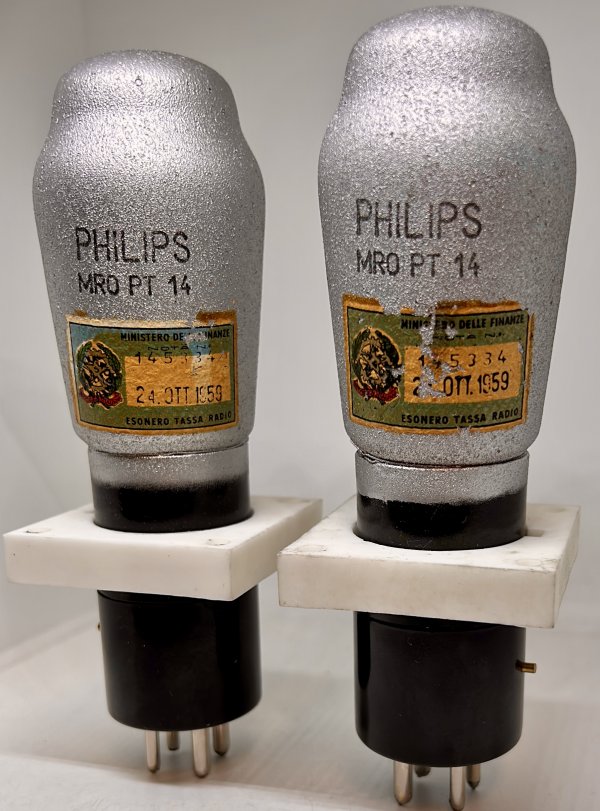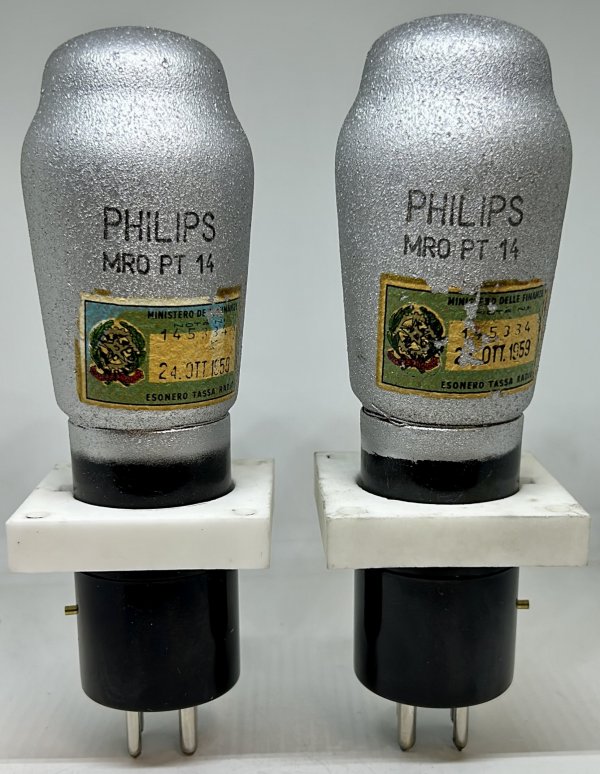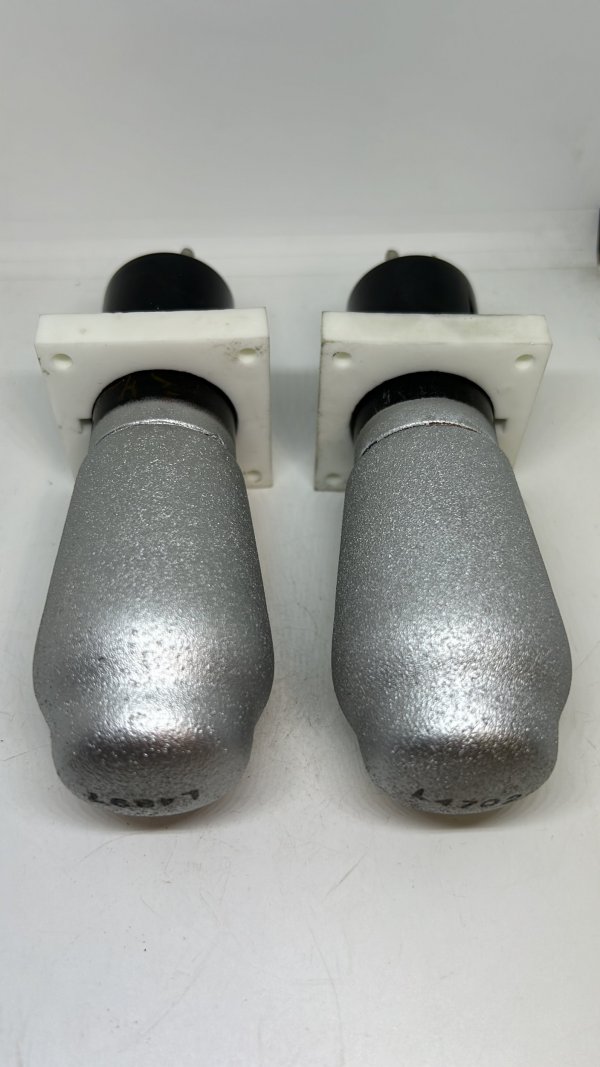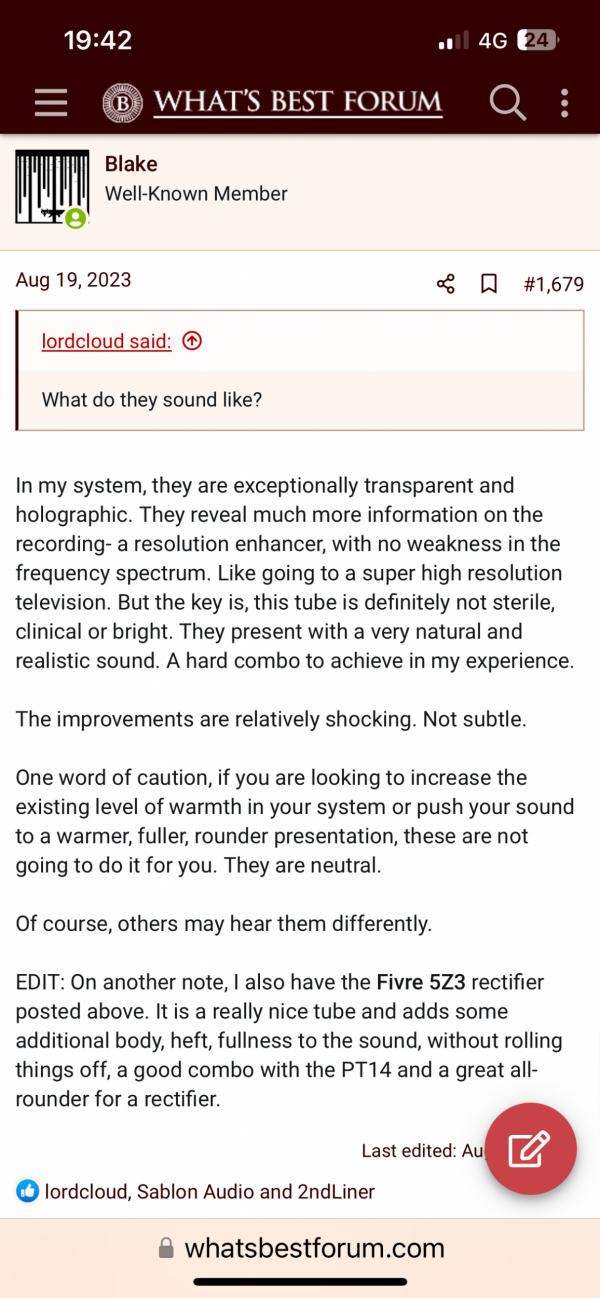But not usable in the HorizonBlake highly reported it on the Horizon tube thread.
Lampizator Valve / Tube Rolling Review Thread
- Thread starter Zero000
- Start date
You are using an out of date browser. It may not display this or other websites correctly.
You should upgrade or use an alternative browser.
You should upgrade or use an alternative browser.
@rspyderThanks Gene. So the1939 RGN1064 has 4V filament rated at 1A. The 1944 AZ1 cathode is rated at 1.1A. If my theory holds, on which I would defer to Lukasz, those rectifier tubes would pair nicely with lower wattage pentodes.
Based on my Horizon trials, the KT170 (85W) sounded thinner and flatter with my Tele RGN2004 (4V/2A) and the 274B (5V/2A) than with my Ken Rad 5U4G (5V/3A). The Ken Rad paired far better with KT170 and Telsa EL51 (45W). Better bass (in slam and articulation), dynamics, tonality, air and overall realism. As noted above, my favourite pairing is the SFR P.17C (25W) with my most recently acquired black-mesh plate Tele RGN2004 Klangfilm rectifier tube (4V/2A). Like Goldilocks - not to hard and not too soft!
Given that Lukasz doesn't place a full load on the pentodes with his design (~25% of nomial output), big power tubes may be overkill. However, some Lampi owners prefer big wattage valves in the output seats of their DACs to capture a big dynamic sound. I have found that I'm getting as much from the 25W P17Cs as the 85W KT170s - with the right rectifier pairing.
I recognize that performance pairing will also be influenced by speaker impedance and its upstream impacts on source and linestage components. Accordingly, my general experience-based observations here are also system specific.
For what it's worth,
Ray
Thank you for this- these notes and observations fall into line with what I’ve noticed through the evolution of these tube rolling threads!
I’m a first time Lampizator owner- I recently purchased a Golden Atlantic 3 TRP. I had been reading the TRP rolling thread for some time and found it interesting- the idea of being able to “tune” the sound is what compelled me to purchase one.
While waiting for the dac to arrive I distilled the entire TRP thread into a condensed pdf file broken down by power tube/model brand, rectifier and any associated comments made on either separately or in pairings. There is no mention or specifics on how output ratings of a particular tube may be influencing the other or whether said higher values were preferable in a power tube or rectifier.
It was only after I had broken the thread down that I noticed a general migration towards higher output power tubes with also a trend towards more exotic examples as well (tubes requiring adapters as well as the use of those outside of the varieties suggested by Lampizator“). This meant that people were really experimenting!
Being that I had very little experience with tube rolling I started researching the available data on each of the tubes used in order to understand what qualities they shared and/or what made them different and realized that many TRP owners eventally gravitated towards more powerful output tubes.
I find this to be especially useful in my pursuit of sound quality as I will not be out buying tubes just for their popularity, vintage or collectibility. As my dac is balanced the thought of this can become troublesome!
I will continue to put my research focus into higher rated/performing tubes as I believe that is key in bringing the best performance of the Lampizator to light.
@mark-tube
Those are very cool and I’ve seen them on another Lampi as well. I had questions on what this tube was about but haven’t found anyone who can answer yet- unique and I’m assuming rare. Do you the history behind this tube and what applications it served? Any notes on output?
Those are very cool and I’ve seen them on another Lampi as well. I had questions on what this tube was about but haven’t found anyone who can answer yet- unique and I’m assuming rare. Do you the history behind this tube and what applications it served? Any notes on output?
They look like 60-ies Christmas Tree DecorPT14 with adapters (for PX4 settings)
Looks like they were made especially for the Italian Ministry of Finance on the 24th of October 1959@mark-tube
Those are very cool and I’ve seen them on another Lampi as well. I had questions on what this tube was about but haven’t found anyone who can answer yet- unique and I’m assuming rare. Do you the history behind this tube and what applications it served? Any notes on output?
It’s interesting to see the “non uniformity” of the bulb with two of them side by side. Had the glass not been treated with the star dust you’d probably not notice. I still want to find out more about it- did they do optional colors?
Yes those tubes are a special serie , not commercial , made for postal office station amplifiers the so called “serie telefonica” (telephone series) they are long life tubes made to last long for continuous working hours (their nickname here is “eternal tubes”@mark-tube
Those are very cool and I’ve seen them on another Lampi as well. I had questions on what this tube was about but haven’t found anyone who can answer yet- unique and I’m assuming rare. Do you the history behind this tube and what applications it served? Any notes on output?
It’s difficult to find advertisements or other infos because people at that time can’t buy these super tubes. Commercial tubes had much less lifetime…
Technical data will be shared in a separate post with all details from my old books
from the same type you will see two different suffix TS or PT (both stands for postal tubes / telephone series)
Regarding PT14: is a direct heater triode DHT equivalent to Ca Siemens (the German postal tubes) , the commercial equivalent is PX4 / RE604 .
Those tubes can be used with great results (with a proper adapter) in DAC Pacific , Golden Gate and others that use Power triode DHT
the silver coated glass helps to reduce noise and it’s an improvement for those tubes with excellent sound
they made the PT14 with different base: black Bakelite , black metal base, metal silver shining base
those tubes has been made in the 1950’s in Italy , Philips Monza plat (former Zenith Italy plant of production)
The labels are the taxes payed October 1959 , those are postal tubes made especially for postal amplifiers (telecom serie) long life and not commercial tubes , made to last long , made for continuous working under severe conditions , not commercial tubes. During the 1950’s people couldn’t buy those tubes …Looks like they were made especially for the Italian Ministry of Finance on the 24th of October 1959
The picture has been taken by side and for this you can see “different” but tubes are the sameIt’s interesting to see the “non uniformity” of the bulb with two of them side by side. Had the glass not been treated with the star dust you’d probably not notice. I still want to find out more about it- did they do optional colors?
Attachments
An high quality decor , long lifeThey look like 60-ies Christmas Tree Decor
Yes those tubes are a special serie , not commercial , made for postal office station amplifiers the so called “serie telefonica” (telephone series) they are long life tubes made to last long for continuous working hours (their nickname here is “eternal tubes”
It’s difficult to find advertisements or other infos because people at that time can’t buy these super tubes. Commercial tubes had much less lifetime…
Technical data will be shared in a separate post with all details from my old books
from the same type you will see two different suffix TS or PT (both stands for postal tubes / telephone series)
Regarding PT14: is a direct heater triode DHT equivalent to Ca Siemens (the German postal tubes) , the commercial equivalent is PX4 / RE604 .
Those tubes can be used with great results (with a proper adapter) in DAC Pacific , Golden Gate and others that use Power triode DHT
the silver coated glass helps to reduce noise and it’s an improvement for those tubes with excellent sound
they made the PT14 with different base: black Bakelite , black metal base, metal silver shining base
those tubes has been made in the 1950’s in Italy , Philips Monza plat (former Zenith Italy plant of production
Attachments
You’re welcome ?? happy to share infos , not many people knows these tubes … hidden gems@mark-tube
Thank you for sharing the history on this tube- very cool!
Few pictures of PT14 / TS14 Philips with the metal shining base / socket . In this pair there is also a table (sticker on glass) with the possibility to mark the date of instal and the date of removal of the tube from the amplifier. (In service / removed) The technician was easier to mark the tubes directly on the glass and count the “Woking hours” of the tubes itself. professional tubes
Attachments
-
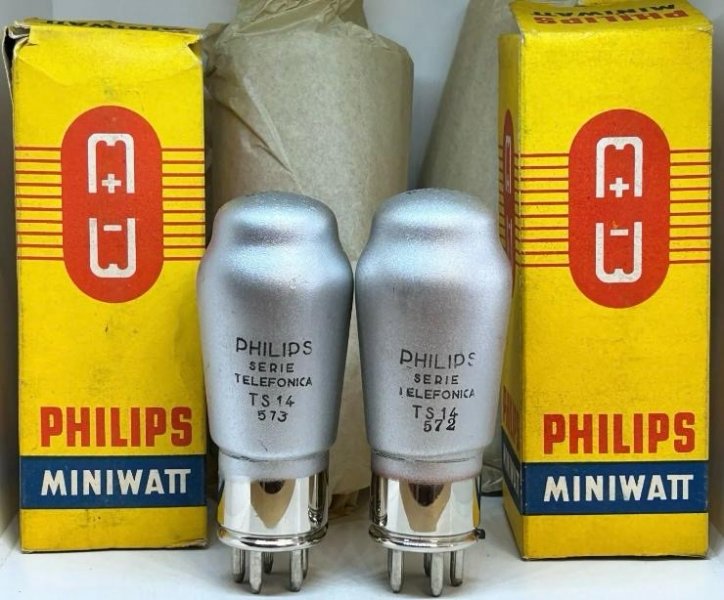 c43791b9-e519-44ee-88e8-0d863370582a.jpeg92.9 KB · Views: 7
c43791b9-e519-44ee-88e8-0d863370582a.jpeg92.9 KB · Views: 7 -
 3c796f60-f9be-4a0f-873a-21a7ef845382.jpeg157.5 KB · Views: 5
3c796f60-f9be-4a0f-873a-21a7ef845382.jpeg157.5 KB · Views: 5 -
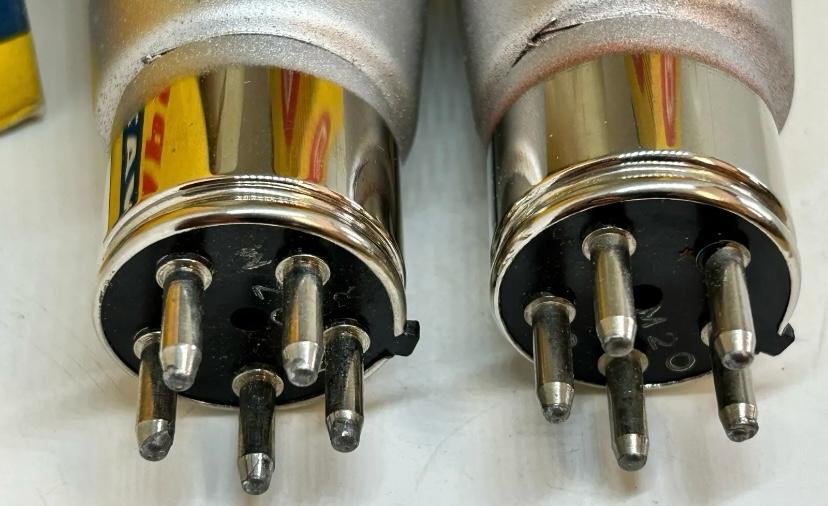 a7ea3b3b-51af-4065-b516-411dcab59387.jpeg77 KB · Views: 4
a7ea3b3b-51af-4065-b516-411dcab59387.jpeg77 KB · Views: 4 -
 6d8523e1-450c-40f4-a822-da2902d3a2b0.jpeg92.4 KB · Views: 3
6d8523e1-450c-40f4-a822-da2902d3a2b0.jpeg92.4 KB · Views: 3 -
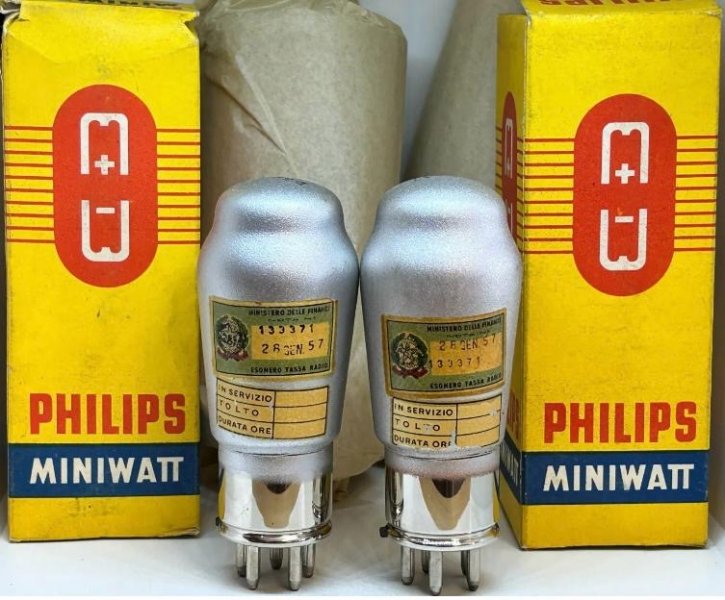 013723e1-b5c7-4b69-b617-bef1dd850cbe.jpeg102.5 KB · Views: 6
013723e1-b5c7-4b69-b617-bef1dd850cbe.jpeg102.5 KB · Views: 6 -
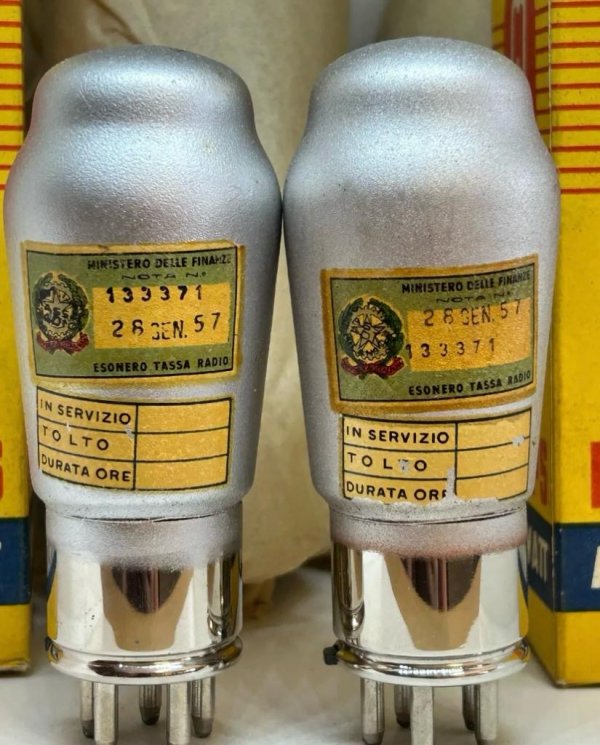 6d3b0dff-1272-4fe8-884a-f4ee9e92af68.jpeg159.8 KB · Views: 6
6d3b0dff-1272-4fe8-884a-f4ee9e92af68.jpeg159.8 KB · Views: 6
'I love the look of those tubes- especially with the silver base! The big question is how do they sound and what would you compare them most to?
There is an excellent review about these tubes from Blake
I leave you here a screenshot from another thread of Lampizator here in WBF (don’t know how to share the direct link but there are all infos and # of post so you could find it here )
Attachments
Posted a separate thread about this but figured that I might get more focused help here.
I just changed my speakers, a very big jump that has brought huge improvements. However, the previous speakers were quite dark and quite prone to getting a bit over enthusiastic in the bass region. To bring balance, I brightened the overall presentation by employing 242 tubes and brighter speaker cables. I'd like to just shade a little brightness off and am thinking going for something like a 45, PX4 or 101 will work. My GG DAC can accept all these in the 45 setting. It also has a 300B setting but I have moved on from 300B for the time being.
Can anyone point me in the direction of a new or otherwise reliable vintage pair of 45 tubes (preferred) or else a set of the other specified here. I am UK based. Thanks in advance.
I just changed my speakers, a very big jump that has brought huge improvements. However, the previous speakers were quite dark and quite prone to getting a bit over enthusiastic in the bass region. To bring balance, I brightened the overall presentation by employing 242 tubes and brighter speaker cables. I'd like to just shade a little brightness off and am thinking going for something like a 45, PX4 or 101 will work. My GG DAC can accept all these in the 45 setting. It also has a 300B setting but I have moved on from 300B for the time being.
Can anyone point me in the direction of a new or otherwise reliable vintage pair of 45 tubes (preferred) or else a set of the other specified here. I am UK based. Thanks in advance.
If you can find a pair of the EML 45 Mesh Anniversary tubes that were sold by Lampi, you’d probably be very happy. They don’t come up often. I bought a pair in early 2022 and proceeded to fry them (wrong GG setting). I've been using current WE300B’s since then.
Similar threads
- Replies
- 93
- Views
- 7K
- Replies
- 6
- Views
- 196
- Replies
- 12
- Views
- 4K
- Replies
- 16
- Views
- 3K
| Steve Williams Site Founder | Site Owner | Administrator | Ron Resnick Site Owner | Administrator | Julian (The Fixer) Website Build | Marketing Managersing |











